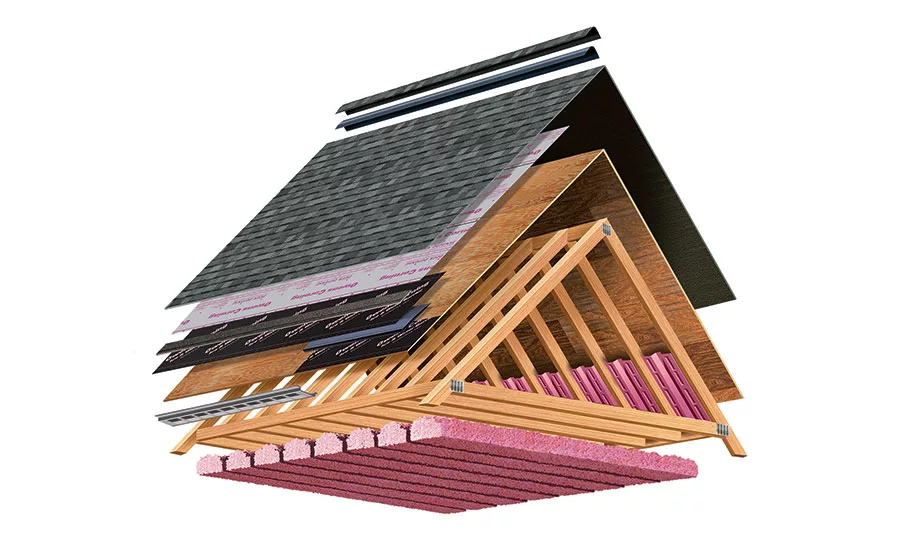Shingles vs. Systematic Selling


Every successful roofing contractor has a system to selling, from the initial introductory call and in-home presentation, to closing the sale. However, if this approach doesn’t include system-selling, you may be selling yourself short.
While roofing professionals know that a roof is made up of more than just shingles, it’s suprising how many homeowners — and in some cases builders — don’t fully understand how the components of an integrated roofing system work together to help protect the home, manage moisture and improve balanced attic ventilation.
Taking the time to educate your customer on the components of a roofing system and the corresponding tangible, relatable benefits throughout the home can help position you as a reliable contractor. This can result in business ‘wins’ and provide your customer with a high-performance roofing solution.
A Homeowner Home Run
Whether it’s been 20 years since purchasing a roof or it’s the first time, most homeowners have limited experience and knowledge when it comes to the roof that helps protect their home. When faced with the need to make this financial investment, homeowners quickly start doing their homework.
During this information gathering stage, they often default to looking at shingle colors and materials. This presents a valuable opportunity for roofing contractors to step forward and establish themselves as a trusted roofing contractor who can guide the homeowner through this important decision making process.
Rather than jumping to shingle selection during the first homeowner meeting, roofing contractors can take a step back and help customers appreciate the mechanics of a healthy, high-performing roof system.
Start by highlighting how each of the integrated system of roofing components and layers are designed and tested to work together. Following is an overview of the six key components that comprise a high performance roofing system – and the role each contributes toward controlling temperature, increasing comfort and long-term performance:
Ventilation — Proper ventilation is a key component designed to protect the roofing system from heat and moisture damage. Everyday household activities generate moisture that can migrate into the attic. Without proper ventilation, it can lead to damage to the structure. Ventilation should be balanced and include both intake and exhaust to help control airflow, prevent mold growth, manage attic temperatures and mitigate ice dams.
Underlayment — Underlayment is often underappreciated for the critical role it plays in providing a secondary defense against the elements and protecting the roof from damage and moisture. In addition, underlayment is a critical component in attaining a Class A fire resistance rating for a roof assembly with asphalt shingles.
Self-adhered membranes — Designed to provide a barrier in vulnerable areas of the roof where water and ice can do the most damage, all roofing systems should include this component in eaves, valleys, dormers and skylights, no matter the climate.
Hip and ridge shingles — Hip and ridge products are specially designed, tested and warranted to bend with the roof’s contours, provide enhanced aesthetics and help protect roof peaks against the weather. Formulated for outside elements, the latest innovations in hip and ridge shingles also help enhance a roof’s beauty beyond what may be achieved by bending standard shingles.
Starter strip — Easy to install and less expensive than traditional three-tab shingles, starter strips make for quick installation of the roof’s outer components.
Shingles — As the most visible element of a roof, shingles should offer aesthetics to complement a home’s exterior and surroundings, while still providing outstanding weather resistance. Asphalt roofing shingles offer a wide range of palettes, shapes, textures, color gradation, contrast and dimension while also offering durability and performance.
At the end of the day, the homeowner wants to feel good about the investment they make in their roof. Gaining a greater appreciation for how the roof system can impact energy costs, comfort and efficiency throughout their home can go a long way toward helping homeowners feel confident about hiring your company and the overall roof purchase.
Creating this positive experience may lead to referrals and long-term success that helps grow your business.
The Builder Benefit
The benefits of a high performing roofing system also extend to residential builders. With increased pressure on reaching performance goals in new construction, incorporating the right roofing system can help builders achieve improved energy efficiency and durability that support overarching targeted performance goals.
Roofing systems are also specifically tested and proven to work together and can result in more accurate, efficient installs that can reduce callbacks or liability issues down the road.
Additionally, working with one trusted manufacturer also allows extended limited warranty options that cover workmanship through manufacturers’ contractor programs and the security of knowing the home is supported by a trusted brand.
Incorporating systematic selling into your new business approach can be a simple, effective way to differentiate you from the competition while providing added peace of mind for your customers.
Looking for a reprint of this article?
From high-res PDFs to custom plaques, order your copy today!




